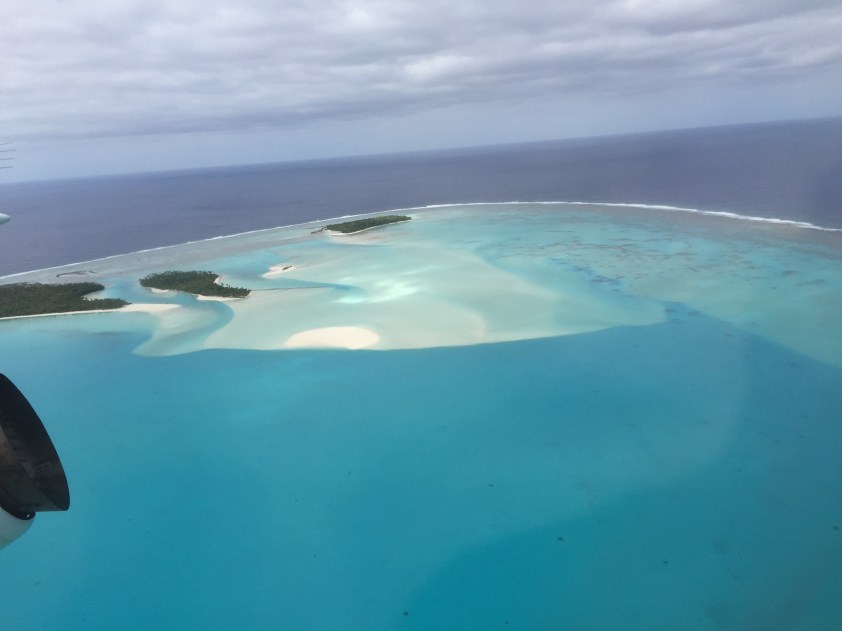
On Thursday we left with the start of the sun peaking across the water to do a full day of surveying in the lagoon surrounding the main part of Aitutaki. We left the dock and zipped across the clear turquoise water to see the amazing coral reefs in the lagoon. As the boat stopped we were greeted by a Giant trevally and crystal visibility.
We found Flametail snappers, Honeycomb groupers and Vanessa spotted a Scribbled pipefish! With the help of the awesome Dr.Steele we were actually able to learn what all the pretty reef fish are as scientists instead of you typical tourist snorkel.
As we ventured along the white sandy bottomed lagoon, large piles of corals called Bommi’s, would appear like mountains under the sea. Villages of fish and coral species were mystical to see.
We stopped on Barefoot island, a bit of a tourist spot to get our passports stamped as a special Cook Islands treat!
Once we were on the far Motu, a small island on the outer edge, Dr. Anderson helped us identify awesome invertebrates and some cool worms we haven’t even identified yet!
The day was magical, we learned so much and are so greatful for the amazing opportunity!










